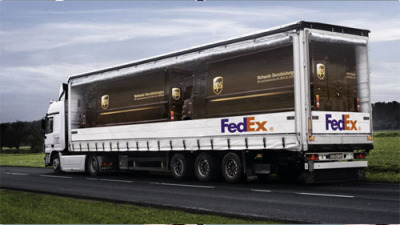Today, I was browsing through my classmates’ blog posts and came across Eivan’s post about Gold’s Gym and its sweepstakes scam. I was quite shocked to hear that the Gold’s Gym at UBC (as well as other locations) lures people in by making them think they “won” a free month’s trial (when in reality, they seem to offer this trial to everyone), only to lock them in a year-long membership as part of the conditions of the “prize”. I know people who are regular Gold’s Gym members who were not recruited through this method, so I was quite surprised that Gold’s Gym finds it necessary to carry out this “Bait and Switch” marketing practice (as Elaine described it) to gain customers.
Unfortunately, deceptive advertising is not as rare of a practice as it should be. Just a few days ago, Business Insider revealed that Ticketmaster will be refunding $1.50 per ticket sold over the last 12 years, thanks to a class-action lawsuit over those unexplainable “processing fees”. The lawsuit did not prohibit from Ticketmaster charging these fees in the future – rather, the ruling stated that Ticketmaster must put it in big red letters on their website that they are ripping you off. But hey, they’re just looking out for both the consumer and the corporation, right? Ticketmaster still needs to make a ridiculous margin in order to sleep at night, right? Oh, and the refund will only be provided to US citizens, because apparently Canadians are too busy drinking Maple Syrup and would be too nice to say anything about it anyways.
I think there are parts of marketing that will always be about deception – after all, marketing is all about making you think a product/company/service is greater than it really is. It’s just walking down that thin line between capturing every last bit of consumer surplus, and actually scamming customers, that marketers and companies have to be careful about – because it’s their reputation (and potentially a lot of money) that hangs on that line.




 And I think this trend has great potential to be big. As Apple has been given credit for playing a part in reviving the music industry, people are now calling the same thing for greeting cards. The Cards app model is the same as the Heinz promotion: you pay a little bit more than if you went to the store and bought the can of soup/card there, but for the extra price you save yourself the convenience of both the product purchase and personal delivery to your intended recipient. So, I don’t see the price being a hurdle (~$3 to send the personalized can of soup) – on the contrary, I’m more interested to know if that price covers all of Heinz’s variable costs of printing individual labels and delivering the cans (or paying a shipping company to).
And I think this trend has great potential to be big. As Apple has been given credit for playing a part in reviving the music industry, people are now calling the same thing for greeting cards. The Cards app model is the same as the Heinz promotion: you pay a little bit more than if you went to the store and bought the can of soup/card there, but for the extra price you save yourself the convenience of both the product purchase and personal delivery to your intended recipient. So, I don’t see the price being a hurdle (~$3 to send the personalized can of soup) – on the contrary, I’m more interested to know if that price covers all of Heinz’s variable costs of printing individual labels and delivering the cans (or paying a shipping company to). This year’s
This year’s 







